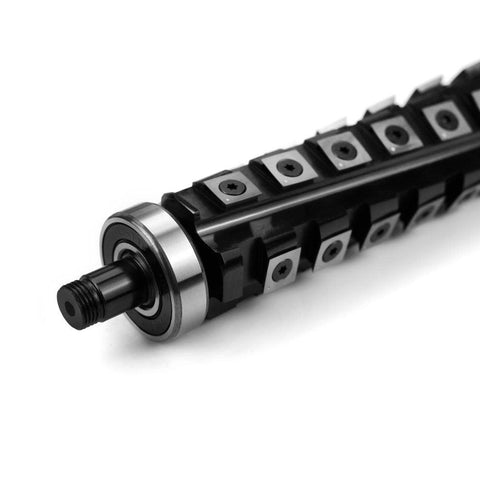Helical vs. Spiral Cutterhead Jointer: Choosing the Best Tool for Precision Woodworking
Woodworkers and craftsmen alike understand the importance of precision and efficiency when it comes to selecting tools for their trade. Among the essential machinery in any workshop, the jointer plays a pivotal role in creating flat surfaces and straight edges necessary for high-quality woodworking projects. When debating between a helical or spiral cutterhead jointer, woodworkers face a decision that can significantly impact their workflow, output quality, and overall satisfaction with their tools.
The helical cutterhead is renowned for its advanced design, featuring small square carbide inserts arranged in a spiral pattern around the cutterhead. Each insert typically boasts multiple cutting edges, ensuring continuous, shearing cuts as it engages with the wood. This design minimizes tear-out and produces exceptionally smooth surfaces, making it an excellent choice for working with hardwoods and figured woods prone to grain irregularities.
Durability and ease of maintenance are significant advantages of helical cutterheads. The carbide inserts are robust and long-lasting, and they can be rotated or replaced individually as needed. This feature reduces downtime in the workshop and lowers costs associated with sharpening or replacing entire knives. For woodworkers focused on efficiency and cost-effectiveness, the helical cutterhead presents a compelling option.
Noise reduction is another area where the helical cutterhead shines. The staggered arrangement of the carbide inserts disperses cutting forces more evenly across the cutterhead, resulting in quieter operation compared to traditional straight knife cutterheads. This feature is particularly beneficial for woodworkers who value a quieter working environment, whether in a small workshop or a shared workspace.
Precision is a hallmark of the helical cutterhead, making it suitable for a wide range of woodworking tasks. From face jointing to edge jointing, woodworkers can achieve flat, smooth surfaces with minimal effort and exceptional consistency. The ability to handle various wood types and grain patterns effectively positions the helical cutterhead as a versatile tool in any woodworking arsenal.
On the other hand, the spiral cutterhead offers a different approach to achieving similar woodworking results. This cutterhead consists of multiple small, individual cutter inserts arranged in a spiral pattern around the cutterhead. Each insert typically features a single cutting edge that slices through the wood in a slicing action, similar to a helical cutterhead but with slight variations in design and functionality.
The spiral cutterhead shares some benefits with its helical counterpart, such as reduced noise levels and the ability to produce smooth cuts with minimal tear-out. However, the spiral cutterhead may not achieve the same level of surface finish or durability as the helical cutterhead due to differences in insert design and cutting angles. Woodworkers considering a spiral cutterhead should weigh these factors against their specific woodworking needs and priorities.
Ultimately, the choice between a helical and spiral cutterhead jointer hinges on several factors. For woodworkers prioritizing ultimate surface finish, durability, and ease of maintenance, the helical cutterhead often emerges as the preferred option. Its multi-edge carbide inserts and shearing action deliver superior results across a variety of wood types and grain patterns, making it suitable for both professional workshops and avid hobbyists seeking top-tier performance.
Conversely, the spiral cutterhead offers a viable alternative for woodworkers who value affordability and straightforward operation. While it may not match the precision and longevity of a helical cutterhead, the spiral cutterhead still provides effective cutting performance and reduced noise levels, making it a practical choice for less demanding woodworking projects or budget-conscious workshops.
In conclusion, whether opting for a helical or spiral cutterhead jointer, woodworkers should assess their specific needs, project requirements, and long-term goals before making a decision. Both cutterheads offer distinct advantages in terms of performance, efficiency, and surface finish, catering to different aspects of the woodworking process. By understanding the unique characteristics of each cutterhead type, woodworkers can confidently select the tool that best aligns with their craftsmanship standards and workshop objectives, ensuring optimal results in every woodworking endeavor.



